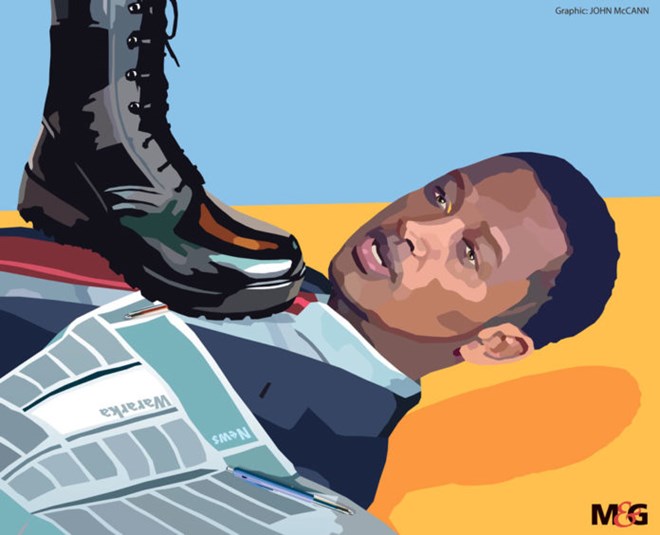by Omar Faruk Osman
Wednesday November 2, 2022

(John McCann/M&G)
Somalia can lay claim – through no choice of its own – to being the most dangerous country for journalists in Africa. Comparative data collected by the International Federation of Journalists (IFJ) and the testimonies of local journalists demonstrate that media rights are flagrantly violated on a daily basis while independent journalists are targeted by agenda-driven groups seeking to silence outspoken voices. Threats and violent actions intended to terrorise media practitioners are routine.
On 2 November 2022, the world will celebrate the International Day to End Impunity for Crimes against Journalists, a UN-recognised event. This year also marks the 10th anniversary of the UN Plan of Action on the Safety of Journalists and the Issue of Impunity. There are few other countries where this issue has the same chilling significance as it does in Somalia.
Those responsible for the killings have never been brought to justice. Nor have those who ordered the assassinations. Although the number of journalists murdered each year has slightly decreased, an end to this campaign of terror is still nowhere in sight.
Some Somali journalists have died in a hail of bullets; others have lost their lives in suicide bomb attacks. Some were sent death threats and lived in fear until their killers finally tracked them down. Others were attacked without warning.
In addition to the appalling death toll, 50 journalists have been seriously injured since 2012, including two journalists and a camera assistant who were wounded on 29 October. Many others – both men and women – have faced arrests, threats and harassment. Impunity for those who attack journalists exacerbates the situation, casting a long shadow over all who work for Somalia’s independent media.
These threats take many forms, and while death threats may grab the headlines, they represent just a small fraction of cases. Journalists in Somalia also face arbitrary arrest on trumped-up charges. There is no expectation that once arrested, a journalist will receive a fair trial. In most cases, the notorious words “convicted as charged” are pronounced.
Female reporters additionally face the threat of gender-based violence and harassment. Attacks on women are far in excess of those experienced by their male colleagues. Threats are also channelled through the digital space where journalists are increasingly subjected to abuse posted to social media accounts by persons known and unknown. The bulk of these threats are levelled at female journalists – primarily, messages warning women that they will be killed or raped if they pursue a particular line of reporting.
The psychological well-being of journalists is another critical safety issue. In addition to covering stories in high-risk, hostile environments, many Somali journalists are unknowingly traumatised by the constant threats and harassment. The fear that they may be deliberately targeted at any time adds to their sense of unease.
The widespread acceptance of impunity for those who attack journalists in Somalia is, in itself, a major cause for concern. But it also signals a lack of collective political will to tackle the problem head-on. Without political commitments, it is unlikely that the deadly violence will abate while obsolete, oppressive laws will continue to be used to legally prosecute journalists rather than those who hound them. This, in turn, encourages individuals within the law enforcement community and, to some extent, the judicial system as well as non-state actors (particularly in the regions) to believe that they can harass and attack journalists without any adverse consequences.
But the time for grief and condolences is over. What is now required is the vigorous implementation of the National Action Plan on the Safety of Journalists that was adopted in Mogadishu in September 2022, with support from the African Union, the United Nations Educational, Scientific and Cultural Organisation, the International Labour Organisation, and the National Union of Somali Journalists.
----
Omar Faruk Osman is the secretary general of the National Union of Somali Journalists and the general secretary of the Federation of Somali Trade Unions. He sits on the executive committee of the International Federation of Journalists and twice served as the president of the Federation of African Journalists.